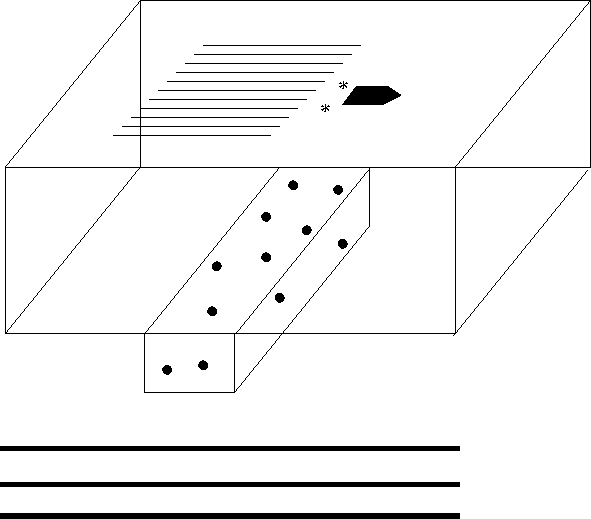|
geom
Figure 1 The model for the synthetic data: a prism containting diffractors below the sea floor, with reflectors underneath. |  |
![[*]](http://sepwww.stanford.edu/latex2html/cross_ref_motif.gif) .
.
|
geom
Figure 1 The model for the synthetic data: a prism containting diffractors below the sea floor, with reflectors underneath. |  |
The data coverage is that of a modern marine 3D survey, acquired in a racetrack fashion. There are 12 streamers spaced at 50m, with 400 receivers in each streamer spaced at 12.5m, with a near offset of 100m for a maximum in-line offset of 5100m. There are two sources, spaced at 25m in the cross-line that are fired in a flip-flop fashion so that a single shot is fired every 37.5m. The total cross-line aperture is 550m. There are 10 sail lines with a spacing of 200m. This is very dense for a 3D survey, but the data density requirements of performing 3D SRME are much greater.
Ideal geometry for 3D SRME would include a source at every point where there is a receiver. In this case, a bin size of 12.5m would be ideal, meaning that in terms of interpolation, the following increase in data density would have to occur:
Most interpolation algorithms are tested by a factor of 2 in the in-line direction, meaning the infill of flip-flop shooting. This will be tested first, and afterward the infill of receiver cables.